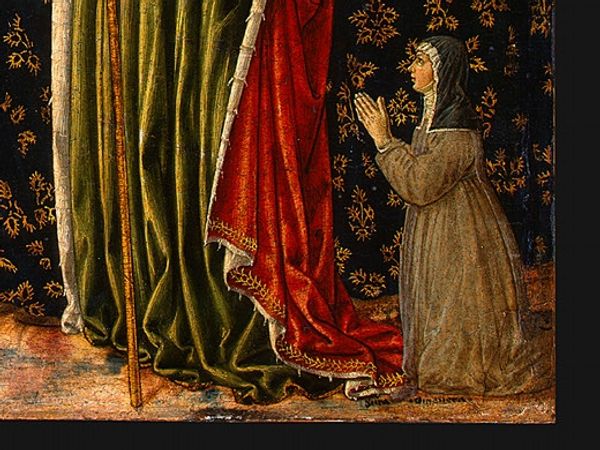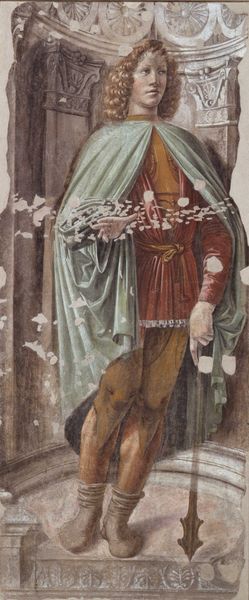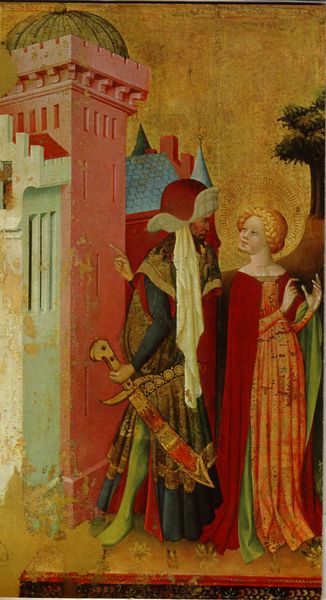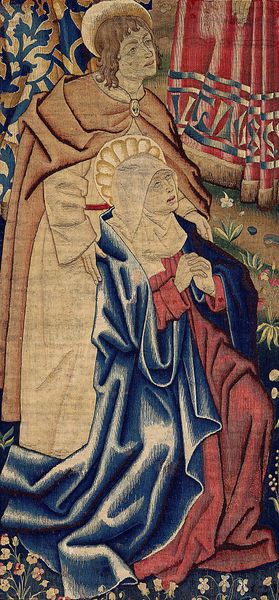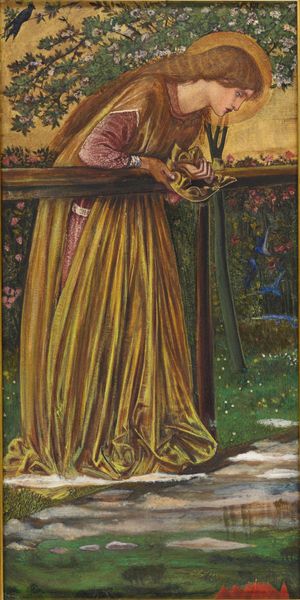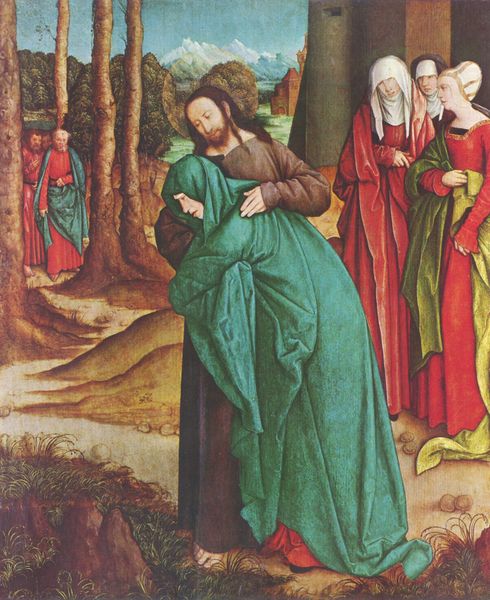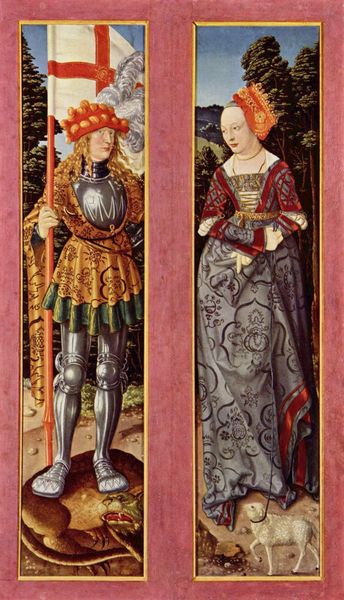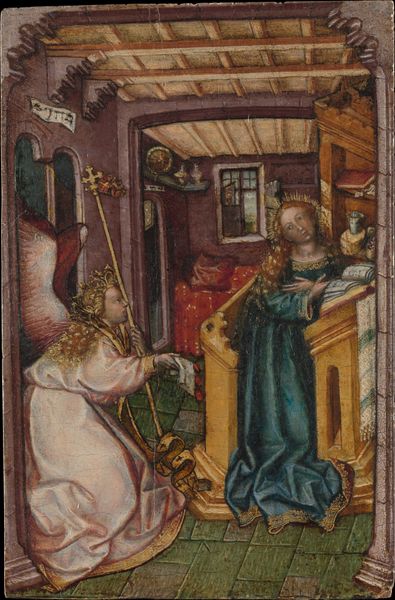
painting, oil-paint
#
portrait
#
painting
#
oil-paint
#
figuration
#
oil painting
#
christianity
#
italian-renaissance
#
early-renaissance
Copyright: Public domain
Curator: Let's explore this section of Benozzo Gozzoli’s "Saint Ursula with Angels and Donor," an oil painting dating back to 1455, a stunning example of Early Renaissance artistry. My first reaction is its subdued palette – a harmonious convergence of hues dominated by earthen greens, rich reds, and golden accents. Editor: Yes, the subdued palette speaks volumes, creating a world saturated with specific cultural codes and symbolism. Note Saint Ursula's golden staff: It's not just an attribute of rulership but a reference to her spiritual authority, rooted in medieval Christian iconography and signaling the legitimacy of her divine office. Curator: Absolutely. What interests me particularly is how Gozzoli handles line and volume here. Observe the linear precision of Saint Ursula's garments, for example. The meticulous delineation of the folds in her dress alongside the strategic placement of light constructs a fascinating play between flatness and depth. Editor: I’m struck by how Saint Ursula becomes a figure embodying feminine virtue and strength, qualities much admired within the Christian ethos, particularly during the 15th century when traditional representations sought to affirm societal gender roles. Look also at the repetitive, floral-like pattern in the background – probably inspired by Byzantine textiles - representing the heavenly host, thus emphasizing Ursula’s divine and holy surroundings. Curator: A thoughtful point. I’d like to suggest a different view as well. Consider that the painting might deliberately depart from strict geometric perspective; its focus is on flattened forms to foreground symbolism rather than creating a fully illusionistic space. The artist’s intention might be to engage viewers through patterns and iconographic devices. Editor: But by disrupting the established perspectival traditions and including, at the bottom of the painting, what seems like a patron, Gozzoli effectively turns Ursula into a symbol that extends into the present. This breaks the illusion of the saint existing outside time and space. The painting invites not only worship of the sacred but an appreciation of lineage and tradition. Curator: I see your reading there. Focusing on pure pictorial structure allows me to grasp not only how such art operates but also what values it prioritizes through spatial configuration and material articulation. Editor: And understanding its cultural history can help contextualize its meaning and allow its symbolism to resonate beyond formal observations. Curator: Both interpretations contribute uniquely, don't they, allowing for an appreciation of this intricate piece? Editor: Absolutely, together, we can recognize the layered beauty inherent in "Saint Ursula".
Comments
No comments
Be the first to comment and join the conversation on the ultimate creative platform.
